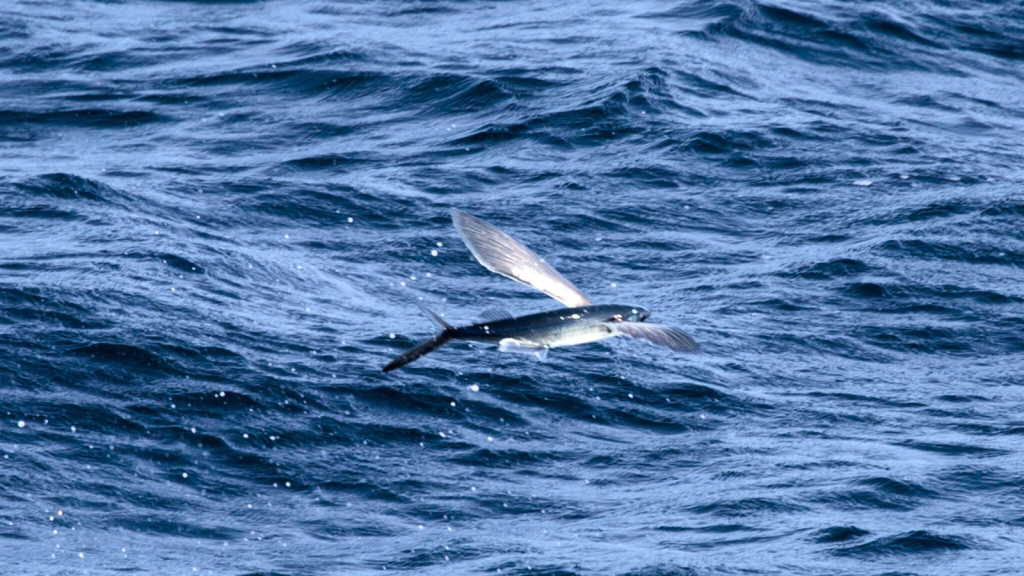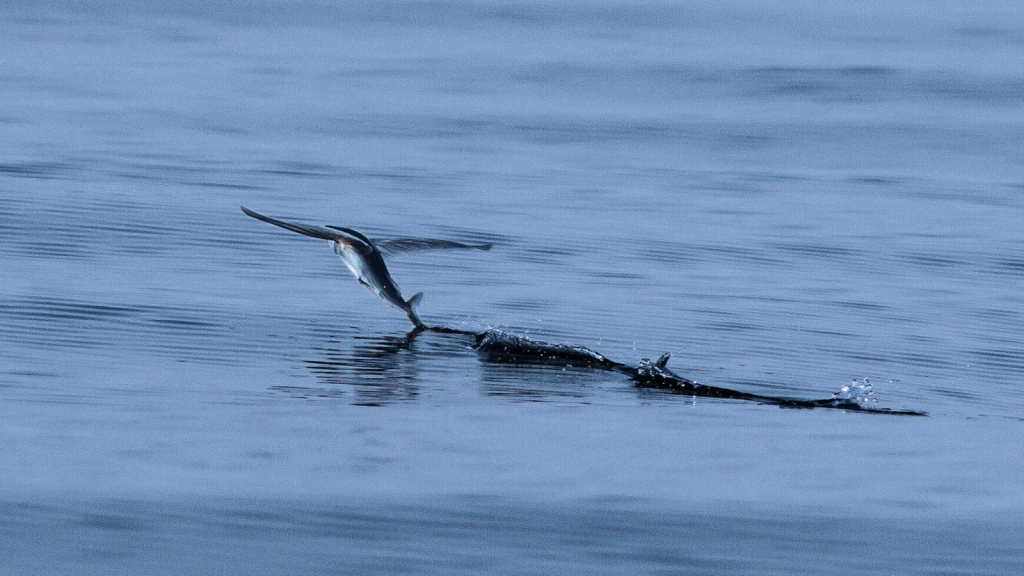Flying fish are among the most extraordinary creatures in our oceans. These remarkable swimmers can leap out of the water and glide through the air, a feat that is truly remarkable to witness first-hand. But there’s much more to these airborne aquatic acrobats than their impressive aerial displays. I’m always in awe of Mother Nature, and the ocean is home to some of the most incredible beings, not least of which is the flying fish.
They’re Not Really Flying

Despite their name, flying fish don’t actually fly. Instead, they leap out of the water and glide through the air. They use their large, wing-like pectoral fins to stay aloft, sometimes for distances of up to 200 metres. That’s longer than two football pitches! During their glides, flying fish can reach heights of up to 6 metres above the water’s surface.
They’re Speedy Swimmers

Before taking to the air, flying fish build up impressive speeds underwater. They can reach speeds of up to 37 miles per hour just below the surface. This speed gives them the momentum they need to break through the water’s surface and become airborne. Their streamlined body shape and powerful tail contribute to their impressive underwater acceleration.
They Have Built-in Propellers

Flying fish have a unique tail fin structure. The lower lobe of their tail fin is larger than the upper lobe. This asymmetrical design acts like a propeller, allowing the fish to gain the speed needed for takeoff. The rapid vibration of this tail fin, up to 50 times per second, provides the final burst of speed required to break the water’s surface.
They Can Change Direction Mid-Air

Some species of flying fish have a second set of fins behind their main “wings”. These act like the flaps on an aeroplane wing, allowing the fish to change direction during their glide. This ability helps them avoid predators and extend their flight time. The fish can also spread and retract these fins to adjust their glide path, much like a pilot controlling an aircraft.
They’re Masters of Escape

The main reason flying fish take to the air is to escape predators. By leaping out of the water, they can avoid underwater hunters like tuna and swordfish. However, they sometimes face new dangers in the air from birds looking for an easy meal. Some flying fish species can make multiple jumps in quick succession, re-entering the water briefly to build up speed for another glide.
They Come in Many Sizes

There are about 40 known species of flying fish. They range in size from small fish about 15 centimetres long to larger species that can reach up to 45 centimetres. The largest species, the California flying fish, can weigh up to 1 kilogram. Despite their size differences, all flying fish species share the characteristic enlarged pectoral fins that enable their gliding ability.
They’re Important Food Sources

Flying fish are a crucial part of many marine food webs. They’re a favourite meal for larger predatory fish, seabirds, and even some marine mammals. In some parts of the world, they’re also an important food source for humans. In Barbados, for example, the flying fish is a national symbol and a key part of the local cuisine.
They Have Unusual Eyes

Flying fish have large eyes relative to their body size. These big peepers help them spot potential predators both in the water and in the air. Their eyes are also adapted to see well both above and below the water’s surface. The corneas of their eyes are flattened, which helps them focus in air as well as water, a unique adaptation among fish.
They’re Nocturnal Navigators

Many species of flying fish are more active at night. They use the light of the moon to navigate and to spot potential predators or prey. This nocturnal lifestyle helps them avoid some daytime predators. Their silver undersides reflect moonlight, making them harder for predators to spot from below.
They Lay Eggs with Built-In Floaties

Flying fish eggs have filaments on their surface that allow them to float near the water’s surface. These filaments also help the eggs attach to floating seaweed or debris, providing protection for the developing fish. A single female can lay up to 6,000 eggs at a time, often in areas where two ocean currents meet, helping to disperse the eggs over a wide area.
They Can ‘Walk’ on Water

Some species of flying fish can use their tails to propel themselves along the water’s surface, almost as if they’re walking on water. This technique, called taxiing, allows them to extend their time out of the water and potentially escape from predators. During taxiing, they can reach speeds of up to 3 metres per second, skimming across the water’s surface.
They’re Found in All Oceans

Flying fish are found in all of the world’s oceans, but they prefer warm, tropical and subtropical waters. They’re particularly common in the Caribbean Sea, the western Atlantic Ocean, and parts of the Pacific and Indian Oceans. Different species have adapted to specific regions, with some preferring coastal waters while others inhabit the open ocean.
They Have Natural Sunscreen

The backs of flying fish are often dark blue in colour. This natural “sunscreen” helps protect them from the sun’s harmful rays when they’re gliding above the water’s surface. It also helps them blend in with the ocean when viewed from above. Their bellies, in contrast, are usually silvery-white, providing camouflage from predators looking up from below.
They’re Attracted to Light

Like many marine creatures, flying fish are attracted to light. Fishermen often use this to their advantage, using bright lights to lure flying fish towards their boats at night. This behaviour has also led to flying fish occasionally landing on the decks of ships. Scientists believe this light attraction may be related to their feeding habits, as many of their prey are also attracted to light.
They’re Ancient Gliders

Flying fish have been around for a long time. Fossil evidence suggests that fish with enlarged pectoral fins, similar to modern flying fish, existed over 65 million years ago. That means these amazing gliders were soaring over the oceans when dinosaurs still roamed the Earth! This long evolutionary history has allowed flying fish to perfect their unique gliding abilities and adapt to a wide range of marine environments.



